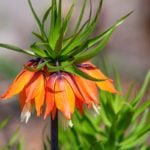Viola – low (15 to 30 cm) herbaceous plant with a bright single flower on a spur, crowning a long peduncle. The flowers are of different shapes and colors: with a predominance of one color or spotty, striped, with one spot; with smooth and wavy edges of the petals and so on, depending on the variety. Some varieties resemble a Fox’s muzzle, a fun look at us on the sly))
In total, there are more than 400 species of plants of the Violaceae family and many of their varieties, of which the most decorative is Viola. Viola has both perennial and annual varieties. In landscape design miniature beauty is used for framing borders and rabatok, for tamping low shrubs, and its undersized varieties (15 -20 cm) very aesthetically pleasing look in rockeries and rock gardens. Planted with a mix, it creates magnificent rainbow glades in the country and gives a peculiar flavor to the overall composition of the landscape.

It should be noted that Viola is very unpretentious. It can be transplanted, even when it blooms. And it blooms or from mid-March to late may, or from August to the colds weather (depending on the variety and time of planting). Likes open Sunny places, but at the same time does not tolerate sun. Therefore, choosing her residence, make sure that it is at least a few hours a day went into the shadows. In General, it is in full shade blooms perfectly, the only drawback-the flowers are smaller and a little paler than that of Viola, grown in the sun.
Landing Viola
Viola can be planted as seeds and seedlings. Seeds are sown directly into the open ground in early-mid-may, at the rate of 50-60 seeds per 1 m of furrow. You can also make small holes at a distance of 5-6 cm from each other and lay in each 2-3 seeds. Before sowing, it is useful to put Viola seeds for a day in a solution of zircon.
Bury the seeds by 0.5-0.7 cm and sprinkle the grooves with the ground chafe with your fingers, pour moderately and lightly mulch the surface with sawdust (this will keep the soil moist). Literally through 5-7 days will appear the first shoots, which very desirable shade (pull from above dark cellophane). After 2-3 weeks, the cellophane can be removed.
Similarly, Viola seeds are planted for seedlings and indoors. Young shoots need transplanted twice: the first time in 5-7 days after planting, the second — in 2-3 weeks according to the scheme: 6×6 cm. After 1.5-2 months, Viola seedlings are transferred to permanent residence in the open ground. The distance between the mounting holes do 20-25 cm, that would be enough for her ease of growth.

For abundant flowering Viola in the second year, sow it in the open ground in July or August. In winter, mulch the plants, and in the spring of Viola will delight you with its amazing flowers. If you want to admire it in the first year after planting, start germinating seeds for seedlings at the end of February. For growing seedlings, it is better to use the purchased soil substrate for violets.
When planting Viola in the open ground, add 0.2 parts of crushed coal to the soil for 1 part of the ground along with small coal pieces (they will act as drainage), 0.2 parts of dry bird droppings or manure. Viola, though unpretentious, but does not like when the soil “hardens”, and coal will eliminate this trouble. But this is my personal “recipe” for the soil of violets. If you are a supporter of the classical style of planting, the ideal soil substrate for plants of the Violaceae family is turf land, manure, peat and sand in a ratio of 2:2:2:1.

You can also multiply some elite varieties of Viola cuttings and layering, but this method is more suitable for greenhouses than for suburban areas, so in this article I will not mention it.
Care for Viola
Viola likes regular loosening and constantly moistened, because its root system is recessed in the soil only 15-20 cm To its flowering has not stopped, try to remove the faded inflorescences with seed boxes. Miniature beauty prefers fertile, moderately moist and well-drained soil, although not wither on poor lands.
Viola seedlings should be fertilized every 10 days with a solution of complex mineral fertilizers. And adult plants monthly feed ammonium nitrate or superphosphate at the rate of 30 g per 1 sq. m of soil. Do not forget to remove harmful weeds in time and make sure that there is no drying of the soil or stagnation of water. In autumn, cover Viola with spruce branches, straw or fallen leaves. Following these simple rules, you will get healthy and strong plants in your country house.
Types of Viola
And now I present to you the most popular among our summer residents types of Viola.
Viola tricolor height from 10 to 20 cm, has large (5-8 cm in diameter) flowers with tricolor petals, of which the two upper usually purple-purple, side slightly lighter, and the lower, usually bright yellow. Blooms outdoors from April to October and is the most decorative species of the Violaceae family.

Viola wittrokiana combines multiple varieties, hybridized with Viola altaica, Viola lutea and Viola wittrokiana. Strongly branched, with large (up to 10 cm in diameter) single flowers. Plant height ranges from 15 to 30 cm (depending on the variety). Usually cultivated as a biennial. Good in mixborders.

Viola altaica – decorative perennial up to 20 cm tall with blue-purple or white flowers with blue stripes, “highlighted” bright yellow spot. Blooms twice a season: from late April to mid-June and from August to the colds. The most sustainable plant.

Viola lutea – the most undemanding species of the entire family of Violaceae. The flowers are lemon yellow with a bright spot in the center. Height: from 8 to 15 cm, flowering period from may to July.

In addition to its decorative qualities, viola (like all plants of the Violaceae family) has excellent medicinal properties and has been used in folk medicine for centuries. Its decoction is treated gastritis, bronchitis, laryngitis and many other diseases. It cleans the blood well and is an excellent expectorant. Infusion of violets is not only useful, but also very pleasant to taste. And with the addition of honey is quite able to replace the usual morning tea))


















